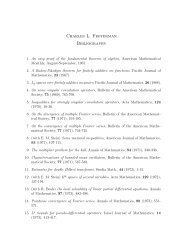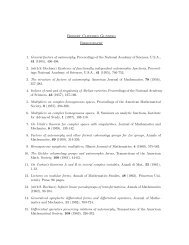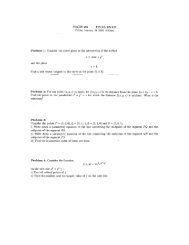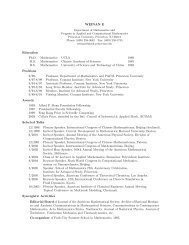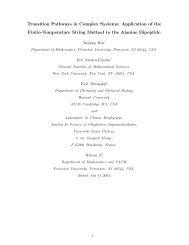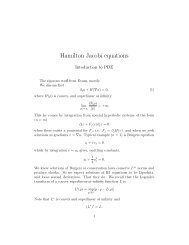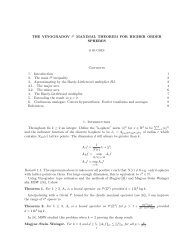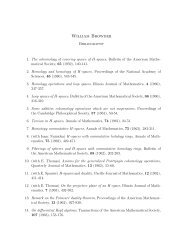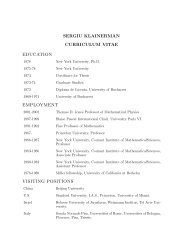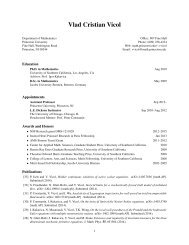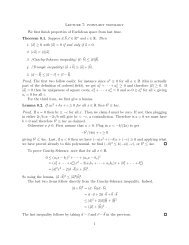The rational Khovanov homology of 3-strand pretzel links
The rational Khovanov homology of 3-strand pretzel links
The rational Khovanov homology of 3-strand pretzel links
You also want an ePaper? Increase the reach of your titles
YUMPU automatically turns print PDFs into web optimized ePapers that Google loves.
22 ANDREW MANION<br />
t = −3 −2 −1 0 1<br />
Q<br />
Q<br />
e 1<br />
e 2 , e 3<br />
e 4<br />
q = 1<br />
q = −1<br />
q = −3<br />
q = −5<br />
Figure 9. <strong>The</strong> inductive step <strong>of</strong> Lemma 4.1. <strong>The</strong> red copies <strong>of</strong> Q depict<br />
the exceptional pair <strong>of</strong> V . <strong>The</strong> red dots are meant to suggest that V has<br />
generators to the left <strong>of</strong> the two copies <strong>of</strong> Q; note that it may also have<br />
generators to the right <strong>of</strong> these copies <strong>of</strong> Q as well, if n is small.<br />
4.2. P(−l,m,n) for odd l and odd n.<br />
<strong>The</strong>orem 4.3. <strong>The</strong> formulas given in Section 2 hold for P(−l,m,n) when l and n are<br />
odd.<br />
Pro<strong>of</strong>. We will use the base case m = l to induct. Assume our formula holds for<br />
P(−l,m−1,n). We will prove it for P(−l,m,n) using the skein exact sequence for the<br />
top crossing in the middle <strong>strand</strong>, which is a negative crossing regardless <strong>of</strong> whether m<br />
is even or odd.<br />
First assume m is even. Our diagram for P(−l,m,n) is oriented LL and so has l +m<br />
negative crossings (see Table 1). <strong>The</strong> unoriented resolution is P(−l,m − 1,n), and its<br />
diagram is oriented RR with m + n − 1 negative crossings. Hence ǫ = n − l − 1. <strong>The</strong><br />
oriented resolution is a diagram for the (right-handed, positively oriented) torus link<br />
T n−l,2 . <strong>The</strong> sequence is<br />
f<br />
q −1 Kh(T n−l,2 ) Kh(P(−l,m,n)) q 3n−3l−2 t n−l−1 Kh(P(−l,m − 1,n))<br />
f<br />
.<br />
Again, call the left-hand term W, the middle term X, and the right-hand term V . W<br />
has exceptional pairs in t = 0 and t = n − l. V has an exceptional pair in t = n − l − 1.<br />
X has one exceptional pair in t = 0.




